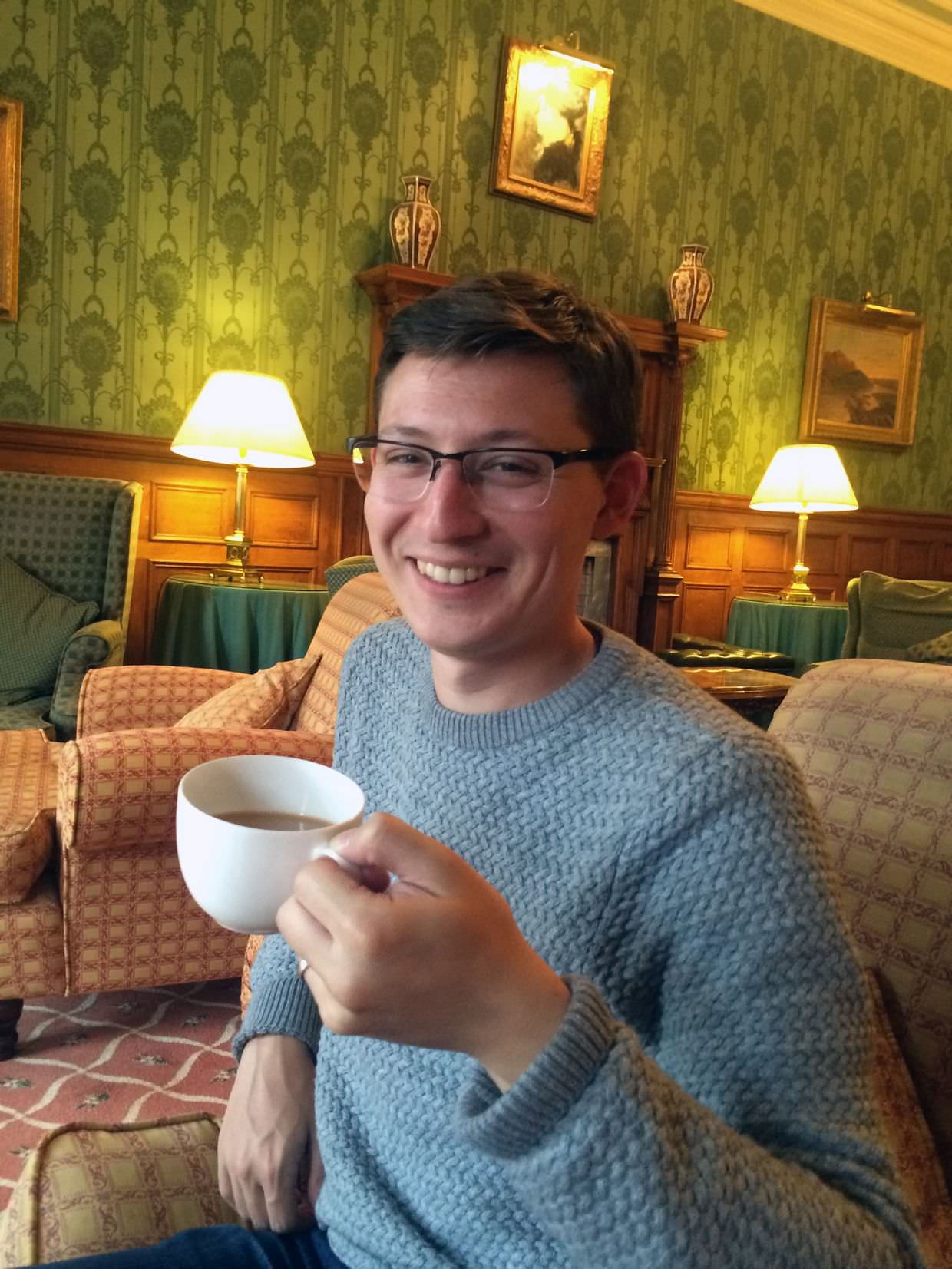A day in Galloway Forest Park
A day in Galloway Forest Park
Following on from Mandy’s fried breakfast, we drove through New Galloway to Galloway Forest Park. We were aiming for the Red Deer Park, but were stopped by the perfectly still and reflecting Clatteringshaws reservoir.
Rushing down to the water’s edge, tripod banging against the floor as we scrambled over the rocks, we hurried to find a composition and capture the scene. After 10 minutes we needed to be on our way, and as a sign the wind picked up; all the reflections disappeared, replaced by endless ripples. Time to go.

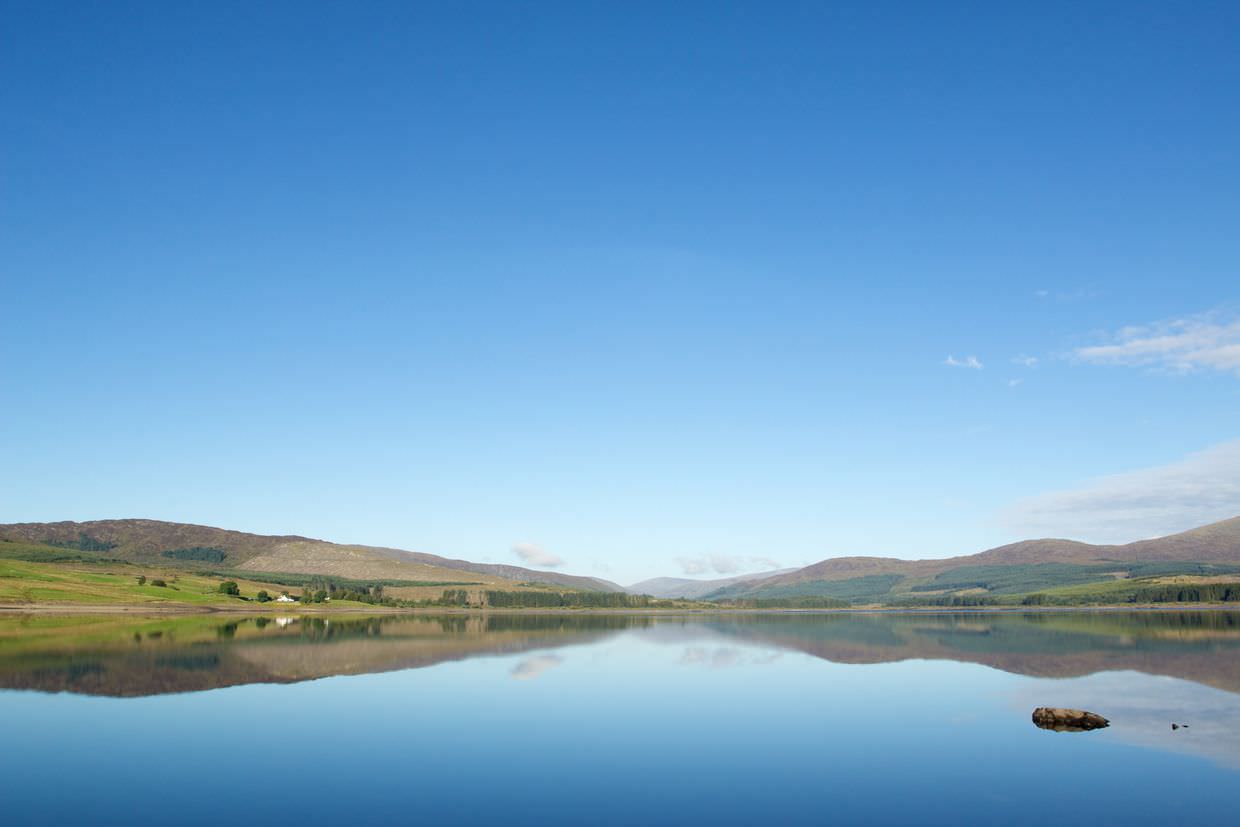
Red Deer
We rushed because at 10am there was a red deer event we wanted to see. There was plenty of time, of course. Huey, the park ranger, greeted us in the hide.
The park has 3 or 4 males, and 20 or so females – he explained; the males tend to die much younger from rutting injuries and exhaustion. Last year the mild winter meant the females came into season late, so this year there’s a worry that some of the calves may not be big enough for the winter, and that the late-winter pattern might continue.
We hand-fed the deer beef pellets; their slobbery mouths hoovered up the lot in seconds. “Do any of them try and get out?”, the park is enclosed. Huey told us that these deer have everything they need, and that they’ve had wild deer trying to get in.
Huey told us about the different deer species in the UK; the red deer are our largest native mammal, the only other native deer is the smaller roe deer. Fallow deer were introduced in the 11th century; but in the last 150 years Sika, Muntjac and Chinese water deer have been introduced and are growing in numbers. The Sika, pose a threat as they can cross-breed with the red deer. A map showed their distribution, and antlers from each species were on display.
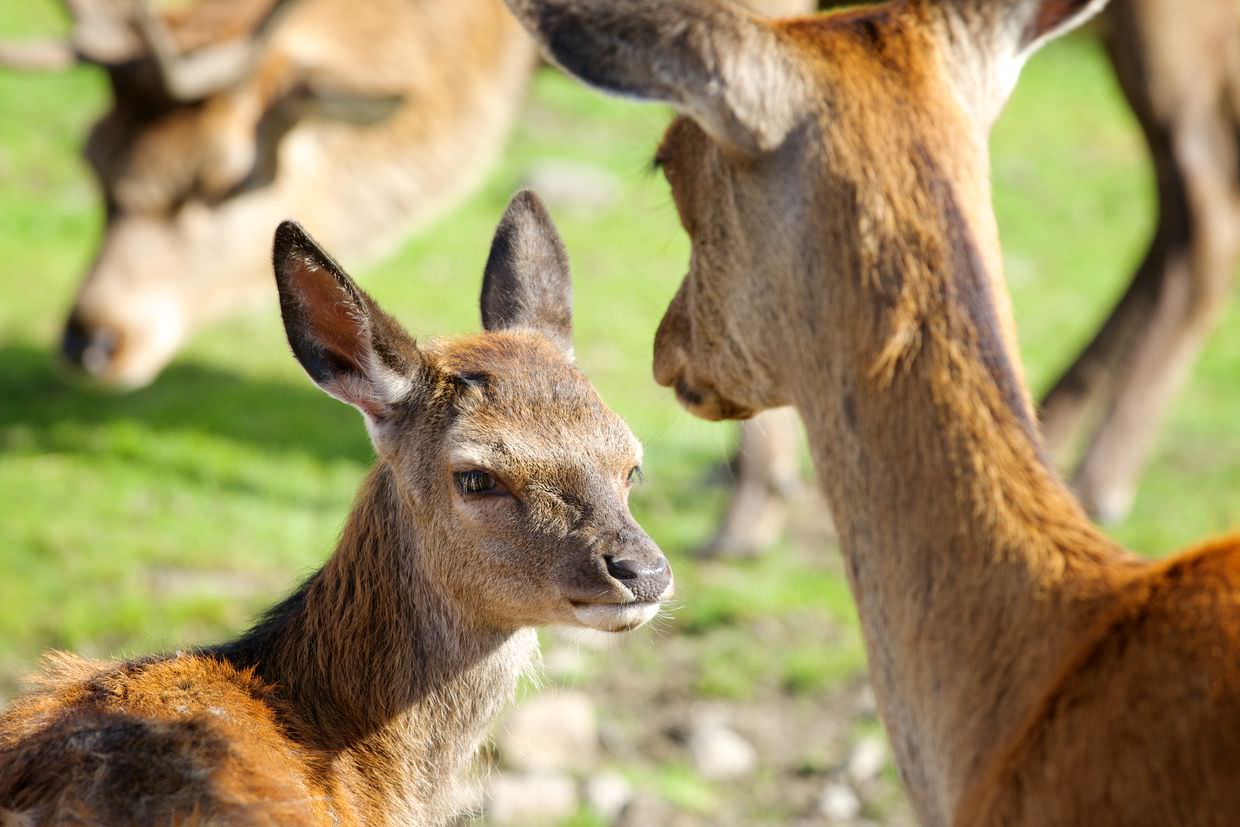

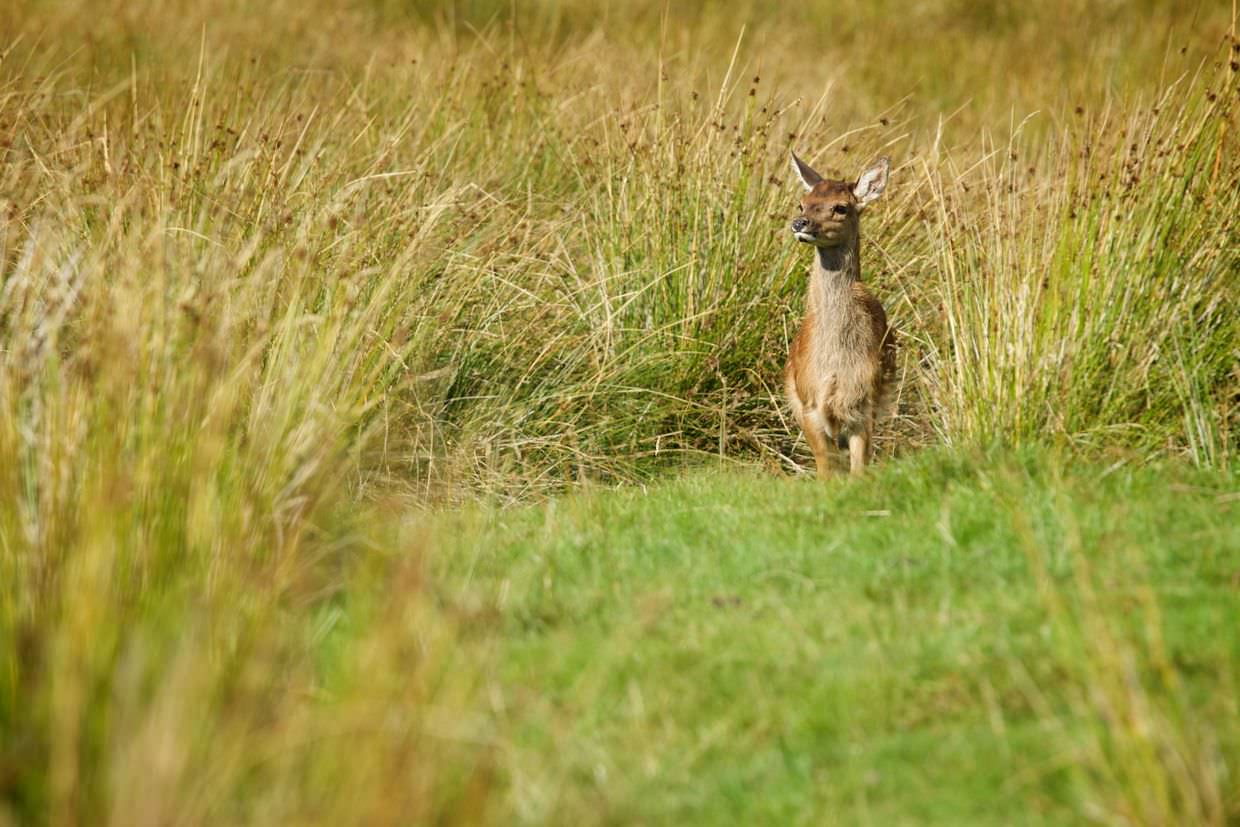
Glentrool
From the deer park we drove 40 minutes along the West-edge of Galloway park to Glentrool, and up towards Loch Trool and Bruce’s stone. Our romantic mid-afternoon picnic on a rug beneath a tree was interrupted. While eating bread, babybel cheese and drinking coffee a cloud of midges attacked. “Romantic”, we were sitting at the edge of a car park, so cutting it short and running from the midges wasn’t such a bad thing.
From the top, near the car park, you can see down into Loch Trool and out along the valley to the West. There’s a 6km walk that takes you to the water, around, and back up. We started this trek, but didn’t finish – midges were the cause once again. We set off, and along the route are many little streams and rivers; these of course attract those pesky flying bugs. A bad idea would be to try and take a long exposure of one of these rivers amidst all the midges; with the tripod set up, we struggled to picture anything while hundreds of midges landed on our face, hands and neck. We covered up in wet weather gear, put on gloves and tried to continue but it was useless. Those midge bites lasted for weeks, my arms were covered in star constellations, crafted by midges. After that we turned back, to capture the picturesque views from the top once again; where of course more midges were waiting.
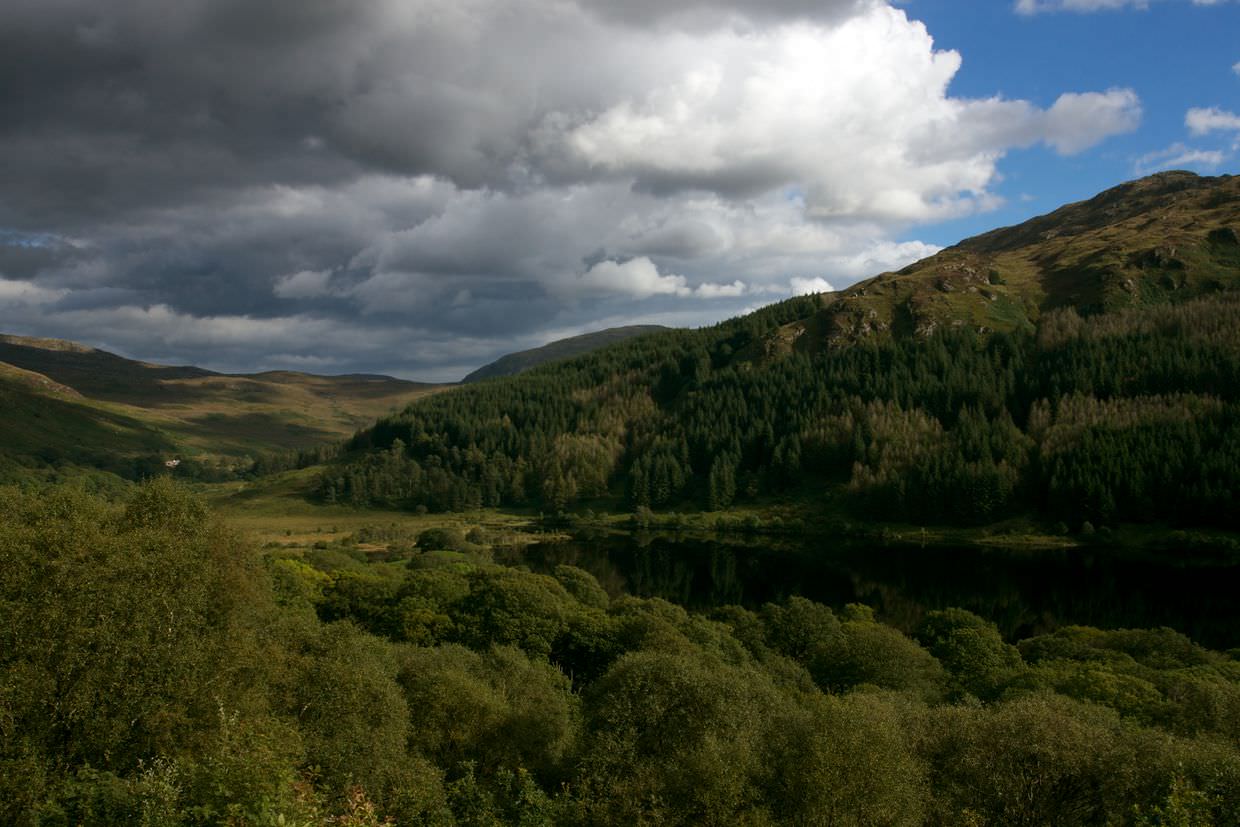
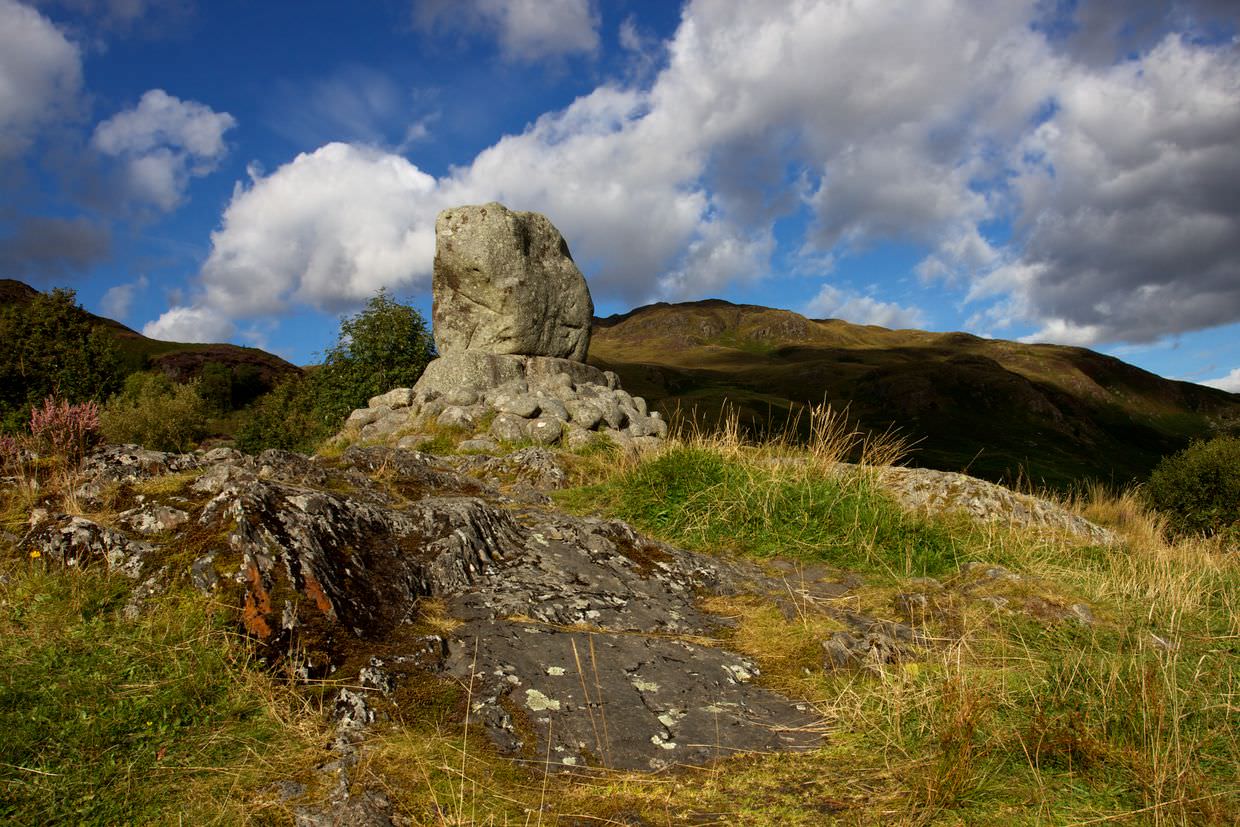
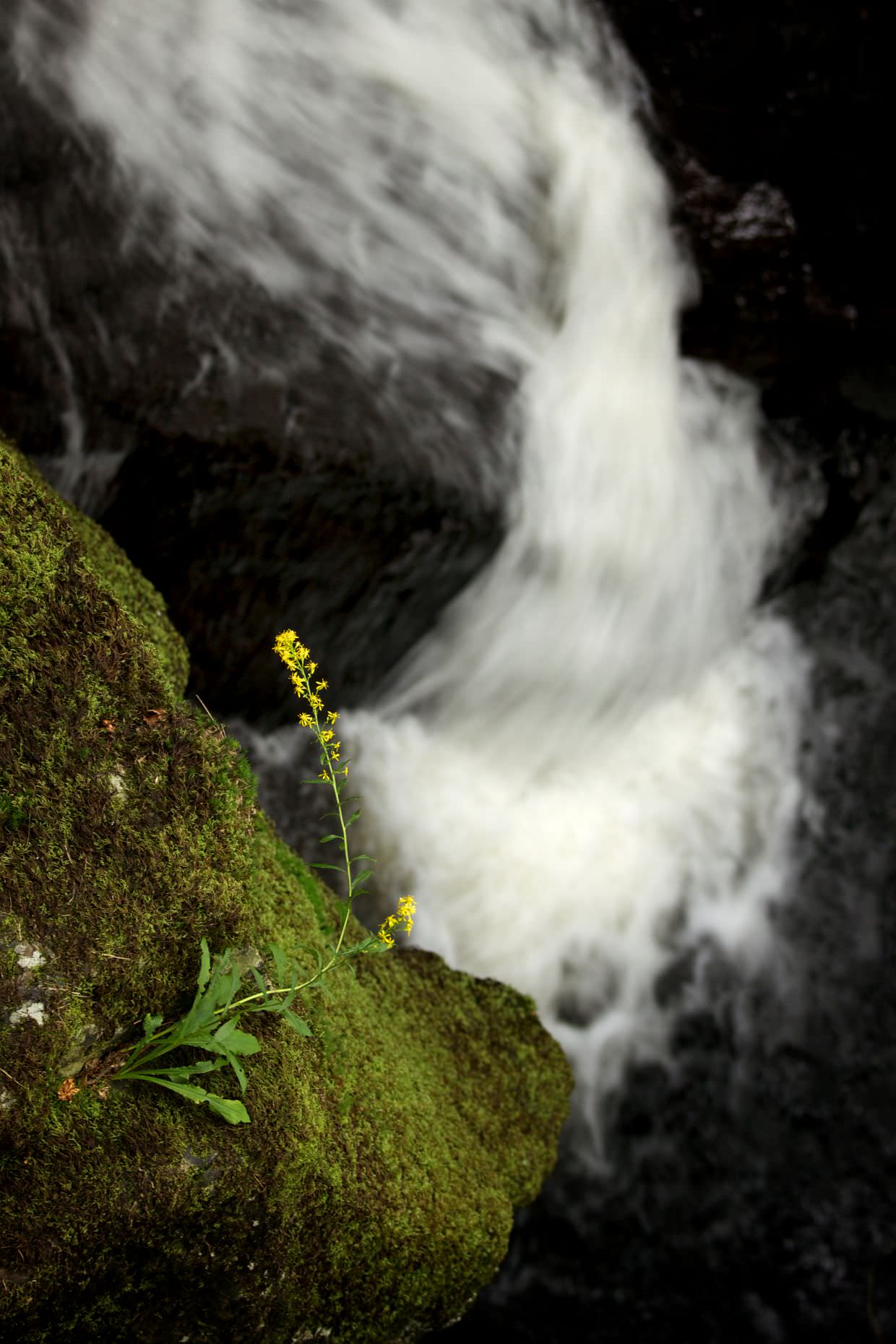

Kirroughtree Country House Hotel
In search of a decent evening meal I consulted the Michelin Guide. The Kirroughtree Hotel was on the way back, and the prices seemed reasonable. Outside Newton Stewart we found the signposts and took the winding road up to the great white country house. Against the pines it looked majestic, the car park was empty, we parked in front of the grand entrance.
From their website:
In 1719 Patrick Heron, a wealthy cattle trader, built Kirroughtree House as a country mansion and status symbol. The lineage continued until 1873, when the last heir sold Kirroughtree to a Major Armitage. The Major carried out a number of Victorian additions to the house, and used Kirroughtree as a sporting estate until it was sold by his family, and became a hotel in 1952.
We nervously headed-in – plates of awards line the staircase – AA rosettas and so on, but they appeared to stop receiving new ones a while back. A bubbly short lady greeted us and explained that the restaurant wouldn’t be open until 7pm. In the meantime we could have tea and shortbread in the lounge.
The lounge was a long room adorned with gorgeous oil paintings of Scotland’s moody landscapes. The walls were wood paneled half way up, where green wallpaper took over. The lounge was empty, a grand reception room now sitting dormant. At the far end we sat with our tea, looking out into the gardens and perusing the evening menu. A peculiar place.
A lovely elderly couple, Scottish, from Perthshire shortly joined us and the story of the hotel slowly made sense. They were regulars, they’d been coming here for years. But they were worried; the place was quiet, where was everyone? It used to be full of life. “Are you staying here?” they asked. In the last 2 years the hotel had changed hands, the McMillan group had sold it, leased it and then let the lease expire. A new Australian owner was in charge. The old clientele weren’t here any more, perhaps the old staff were gone too.
The meal was nice, but nothing to write home about, and we saw only one other couple; also elderly and Scottish, they told a similar story. We enjoyed the mystery and intrigue of this grand and beautiful building, but feared its fate. We were glad to get away.
